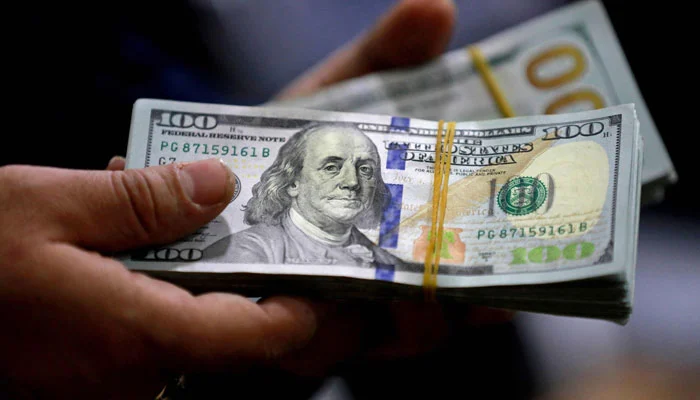- Ishaq Dar says SBP received the amount in its account.
- Second disbursement part of $1.3 billion facility.
- Finance czar hopes $500m will shore up forex reserves.
Pakistan on Friday received $500 million — the second disbursement of the $1.3 billion facility — from the Industrial and Commercial Bank of China (ICBC).
Federal Minister for Finance and Revenue Senator Ishaq Dar announced the development on his Twitter handle.
He wrote: “State Bank of Pakistan has received today in its account from Chinese Bank ICBC $500 million. It will shore up the forex reserves of Pakistan. AlhamdoLilah!”
The second critical disbursement from the Chinese bank came after Pakistan completed the necessary documentation.
Earlier this month, the Chinese lender had approved a rollover of a $1.3 billion loan for Pakistan.
Following the announcement, the Chinese bank deposited $500 million — the first disbursement — on March 4 which helped the foreign exchange reserves surpass the $4 billion mark.
The cash-strapped country has faced growing economic challenges, with high inflation, sliding forex reserves, a widening current account deficit and a depreciating currency.
Earlier, Dar — who took charge of the finance ministry in September last year — said that Pakistan has made payments of around $5.5 billion (excluding the $1 billion sukuk payment). These include $2 billion to China Development Bank and ICBC and $3.5 billion have been given to banks in other countries.
“Debt is usually rolled over but the debt stock does not reduce. We are reducing debt stock,” he had said. “Formalities with ICBC were completed last night. We returned $1.3 billion to it and this facility has been renewed and we will receive the amount back in three tranches.”
“We paid back $1.3 billion in three tranches — $500 million, $500 million and $300 million. We will receive it back the same way. Pakistan will get $500 million in two-three days. We might receive it on Monday. Then we will get an additional $500 million in 10 days.”
Foreign exchange reserves were at $4.3 billion as of March 10, just enough for less than a month of imports. While the liquid foreign exchange reserves stand at around $9.8 billion which includes $5.5 billion in net reserves held by commercial banks.
A report published in The News stated that a Chinese bank has given assurances it will provide another refinanced $500 million loan within the next few days, bringing the total of commercial loans up to $1.7 billion out of the total committed amount of $2 billion.
The Pakistani authorities are running from pillar to post to get 100% confirmation from friendly donor countries and multilateral creditors before moving toward striking a staff-level agreement with the International Monetary Fund (IMF).
It was the unwritten condition of the IMF that Pakistan must secure the refinancing of commercial loans as well as a rollover on deposits from China during the programme period, which is scheduled to expire in June 2023.
“Another $500 million commercial loan is coming from a Chinese bank,” a top official of the Finance Division confirmed on Wednesday and added that it would be done soon.
Chinese banks have already provided re-financing of $1.2 billion in commercial loans in the past few weeks, and now Beijing has given an assurance on another $500 million in loan re-financing in the next few days.
It is relevant to mention that Pakistan had also requested to grant rollover on the Chinese SAFE deposit of $2 billion within the ongoing month.
All these, the refinancing of commercial loans and rollovers on SAFE deposits, are pre-requisite for moving towards the signing of a staff-level agreement between the IMF and Pakistani side.
Now Pakistani authorities are anxiously waiting for confirmation from the Kingdom of Saudi Arabia, the UAE, and Qatar, as well as from the World Bank and the AIIB, for fulfilling their external financing needs of $6 billion until the end of June 2023.

 Latest News15 hours ago
Latest News15 hours ago
 Latest News15 hours ago
Latest News15 hours ago
 Latest News15 hours ago
Latest News15 hours ago
 Latest News15 hours ago
Latest News15 hours ago
 Latest News15 hours ago
Latest News15 hours ago
 Business15 hours ago
Business15 hours ago
 Latest News15 hours ago
Latest News15 hours ago
 Latest News15 hours ago
Latest News15 hours ago




















